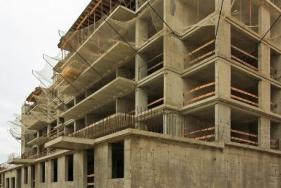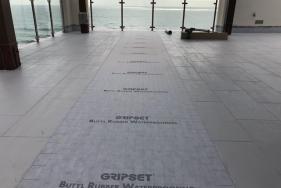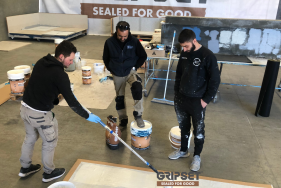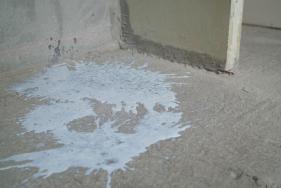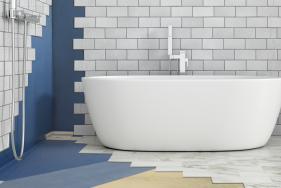Waterproofing both under and over screeds
Waterproofing both under and over screeds - why are we seeing more of this happening out in the marketplace?
There was a time when we used to just waterproof under a screed, tiled on top of those screeds and then found that the screed would get all wet, and even though the substrata would be protected, we'd have a mushy screed and that was retaining moisture in there, which is not a good thing, and that causes things like efflorescence very often on external balconies.
We then went to a trend in the market for many years where, and still happens, where we waterproofed on top of screeds only, and that was successful in many ways with preventing efflorescence. However, if you have, sometimes, the issues we see with that method is that if you have substrate movement and you have a screed that is not in high strength, that can crack and then it can create issues for tile on top afterwards.
I have to say that the method or the trend of many specifiers and particularly building clients and waterproofers sometimes going under and over the screed now is because it's just a double-whammy system. It's more durable, the terminology that's being used about it being bullet-proof, and hence, we're seeing that trend happen more and more often in the marketplace.
So, the reason that you could consider this, if you are looking into it, and you're thinking, why are you just trying to sell me more membrane? Well, it is more membrane that's sold and used, but we're talking about some serious errors here.
Firstly, if you've got a system that's over and under a screed, it is more security. So your warranty system or the warranty period should be longer than a standard single system, that's first and the client should get that value out of that.
Secondly though, it's a screed protection system, so I'm a big believer that a good membrane system on a substrate, whether that be a suspended surface or a lightweight structural concrete, a good membrane will act as an underlay, and so it should protect the screed from cracks with any substrate movement.
The other thing is if you've got this membrane underneath the screed, and on top of the screed, you have then a situation where you've got substrate protection into the screed, as well, and the substrate's waterproof so you've got a membrane directly on that surface that, at least you can flood test that and know that before the screed is laid, that area is totally waterproof.
Screed goes on top. Now the membrane system goes on top of the screed, and then you have a double system. The screed will never, or should never, be exposed to any moisture. If for whatever reason there's damage done to the top membrane for whatever, and there is a number of reasons, numerous reasons, that could happen, you still got a piece of mind that you've got a bulletproof membrane system under that screed that has been flood tested, and in the event that any tiles have to be removed from the screed, whether it had been cracked or not, you could, if you had to, you could repair the waterproofing on top of that screed, knowing that you've still got a decent system underneath that. That's the first one.
The double protection, as I mentioned before, should give you a longer warranty system and an alternative and something you should really consider because there are different phases, particularly with commercial buildings. But exterior wood, so think a lot about podiums and balconies where this has value, where sometimes waterproofing is done on an external floor or to enable the other trades below to keep working, to protect them against weather, yet that membrane could be exposed to other damage from weathering or damage from other trades traffic. Having a final system on top of the screed after the event is good practice to give you a bulletproof method from there.
Internal versus external areas. Internally, you might have the full floor that has been waterproofed, but then it can be a bit of overkill to go over the screed outside the shower alcove, unless you're talking about a wheel chair access situation, or disabled bathroom, but if it's a shower alcove with the water stopped, under and over makes really good sense there. And again, it gives you great protection and ensures that screed stays dry and does it, and serves its purpose, which is basically just to make sure the water follows the drain.
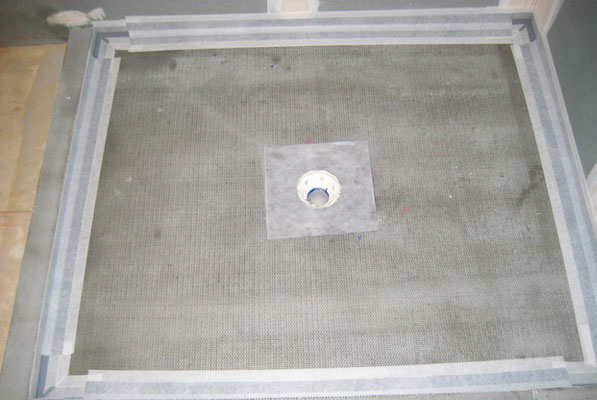
Ground floor, it's up in the air, same thing with bathrooms though, with shower alcoves. I run the it has merit, and again, I would be paying for it if I knew the contractor was going to give the client a longer warranty system.
External waterproofing is really the major benefit here, I'll tell you, we mentioned some things about efflorescence. We have spoken about this before. Efflorescence comes a lot of the time from screed systems, and the moisture that they retain. It is important that the screed is protected over and under outside. It does give you that piece of mind because there's a lot more water exposed to an external area than an internal bathroom. However, there's a couple things you need to look at. You need to think about the screed drying. Okay, you can have a system where membranes on the substrate, fully waterproof, that has been flood tested, stage one is complete, screed comes in on top then if you put another membrane over the top of that, you've now got a screed that has residual moisture, or could have residual moisture, up to seven days and if it's exposed to weather, they could be absorbing more moisture during that phase of drying out. Now, if you've got a membrane on top that could end of blistering that membrane by putting a top membrane that the second layer on top of a screed that has some sort of residual moisture.

You do have the option of putting a vapor barrier primer down first before you put that top coat on top. The bond breaker must be at both areas, both the bottom membrane system, and the top membrane system. You can't say, " because I've got the bond breaker at the base membrane and a double system, I don't need to do it at the top." You need to do it in both areas. You need to treat them like two separate applications and full compliance.
If you have a situation though where you've got, and this happens a lot, where clients want a GC system on a floor outside because it provides the anti-fracture properties. You put a screed on top, you then want to use a liquid membrane and the Gripset 38FC over it. If that screed isn't dry, the Gripset 38FC can blister, if it's external with the sun coming out. We'd use our E60 and that could prevent that, however you can look at a situation where you might on that top coat use a product like the Gripset 2P, which is a breathable membrane system. So what that allows you to do, we know that some of cementitious product, flexible cementitious product will bond directly to the screed, and then if there isn't any residual moisture, it will breathe through that membrane without the blistering phenomena. So something to consider if you guys are at the buffing up systems for you clients with 15/20 warranty options.
I mentioned sheet and liquid systems, you can have liquid and liquid, both under and over, where you might have a sheet and a sheet. Just remember that if you have, whatever you are using, you must make sure that that screed, you don't trap moisture in the screed with two membrane systems, where that moisture from the screed can't evaporate or escape. You cannot retain that. There are moisture methods you can have and get to measure the moisture level of the screed before you put the top layer on it, but don't run the risk of thinking you've done a great job and you've kept wet screed, or a damp screed within that layer of two membranes you've got. You've got to do the job properly, so if you are the waterproofer and you've got a tiler coming in between, time it in within when these guys are doing. If you start with weathering in the middle of the winter, or times when there is dew, you might have no option but to put something like the E60 and on top of the screed and then it will actually protect the blistering phenomena, but then you've then got to think about how that moisture is going to escape that screed system. So, these are all things you need to take into account. There are additives, there are fast drying screed products out in the marketplace as well, that will continue to cure while their sandwiched between membrane systems, so these are the things you need to look at, take into consideration, it's a full system you're offering. So please, please take into account this is an area that I see is a big improvement for the industry we are going over and under in many applications. However, no good offering a better system if you're not completely offering the client a long-term solution, so take that into account.

If you've got any questions on this, whether it be an application internal, external, with any of our membrane systems or other membrane systems, call 1-800-650-435 or e-mail techenquires@gripset.com or jump onto the website Gripset.com . All the leads and contacts are there for us, more than happy to help you and ensure that you are improving the quality of waterproofing in the market and in Australia countryside. And also, any of our friends over in New Zealand doing this work, more than happy to help you across the ditch.
Share:

